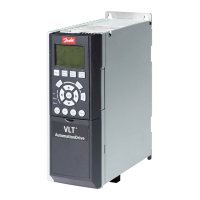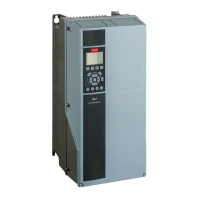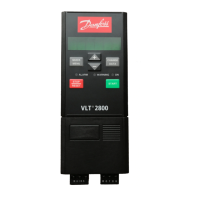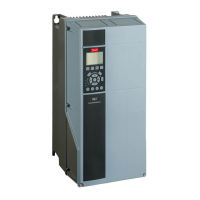A cyclic CAM that passes an end node without following
segment blends to the start node of the CAM prole. For
example, in Illustration 2.78, the nodeID 2 has no following
segment and when executing this CAM as cyclic CAM, the
axis blends from node ID 2 to node ID 0.
Non-immediate switching to another CAM takes place
when the currently running CAM passes the next occurring
end node (cyclic and non-cyclic). In Illustration 2.78, this
would be when passing node ID 2 and in Illustration 2.79,
this would be, when passing node ID 0. The switching only
takes place when node ID 0 is in the processed path.
Otherwise, a command is needed for segment ID 2 to be
the following segment of node ID 3.
GuideNode
GuideNodes are similar to data points within a machine
cycle. However, in contrast to data points of a basic CAM, a
GuideNode is only dened by its guide value position
(master position). The slave position, velocity, and
acceleration are not dened inside a GuideNode. This
information is given in the connected segments. The
velocity (and acceleration) of 2 segments that are
connected to the same node must match. Otherwise a
jump in velocity (and/or acceleration) occurs. Each node
has a unique ID for referencing to it. A GuideNode
combines GuideSegments so therefore, represents starting
and ending points of segments.
Illustration 2.80 XML Representation of a GuideNode
Attribute
Mandatory/
optional
(+default
value)
Value range/
allowed values
Description
nodeID M Integral
number; 0–
65535
Integral number to
uniquely identify this
node. The nodeID must
be unique across all
GuideNodes and
EventNodes. The same
nodeID cannot be used
twice. The node with
nodeID 0 is the
starting node.
masterPos M Float; 0.0–1.0 Master position for this
GuideNode. Given in
revolutions of guide
value.
Attribute
Mandatory/
optional
(+default
value)
Value range/
allowed values
Description
signal O;
default =
FALSE
FALSE or TRUE Denes if this node is
signaled by the axis.
This attribute is
optional. If it is not
present, the default
behavior is not to
signal this node.
endNode O;
default =
FALSE
FALSE or TRUE Denes if this node is
an end node of the
CAM. This attribute is
optional. If it is not
present, the node is
no end node.
action O;
default =
no action
0, 1, or more
existing action
IDs
Denes if 1 or multiple
actions are attached to
this node. This
attribute is optional. If
it is not present, no
action is assigned to
this node. To dene
multiple actions for
this node, all action
IDs must be listed
inside the attribute,
separated by a white
space. If a non-existing
action ID is used, an
error is issued during
parsing.
Table 2.15 Attributes for GuideNode
EventNode
Like GuideNodes, EventNodes are data points within a time-
related movement. They combine EventSegments in an
EventSegmentContainer. Each EventSegmentContainer has
exactly 1 rst EventNode, which has no preceding
EventSegment, and at least 1 ending EventNode, which has
no succeeding EventSegment.
Illustration 2.81 XML Representation of an EventNode
Servo Drive Operation
VLT
®
Integrated Servo Drive ISD
®
510 System
54 Danfoss A/S © 01/2017 All rights reserved. MG36D102
22
